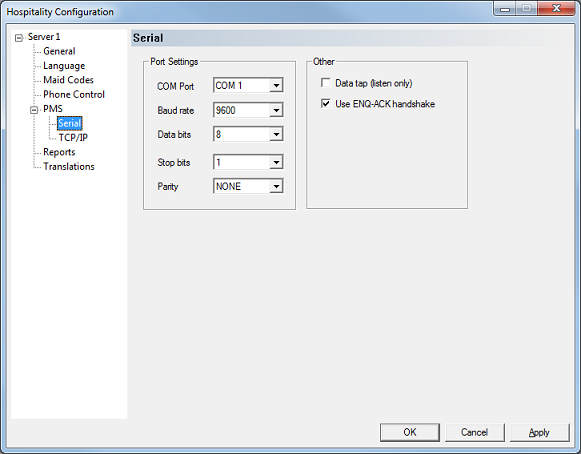|
The Serial page provides the settings for configuring the serial port to properly communicate with a PMS. The figure below shows the settings available on this page.

Port Settings
These settings determine which COM port to use and how to configure it to properly communicate with the PMS at the other end of the serial link. With the exception of the COM Port setting, they must all be set to the same values used by the PMS.
Setting
|
Description
|
COM Port
|
Select the COM port to use.
Note: Assignment of COM ports to the physical serial ports on your PC is typically determined by the BIOS settings. COM1 does not necessarily map to serial port 1.
|
Baud rate
|
Select the baud rate expected by the PMS. The default is 9600 baud.
|
Data bits
|
Select the number of data bits expected by the PMS. The default is 8 bits.
|
Stop bits
|
Select the number of stop bits expected by the PMS. The default is 1 bit.
|
Parity
|
Select the type of parity expected by the PMS. The default is None.
|
Other
These settings further refine the communication process between the VMS and the PMS.
Setting
|
Description
|
Data tap (listen only)
|
Check this box if the DV2000/DV4 is spliced into the communication link between the PMS and the PBX. In this case, the VMS will never respond to the PMS nor send any outbound packets.
|
Use ENQ-ACK handshake
|
Check this box if you need the VMS to send an ENQ (enquiry) and receive back an ACK (acknowledgement) before it is allowed to send a message packet to the PMS.
Note: Some PMS protocols use the ENQ to request that the VMS resend its response to the last packet received. In such a case, this setting should be disabled.
|
| 




